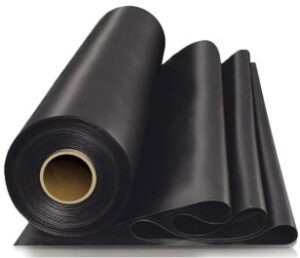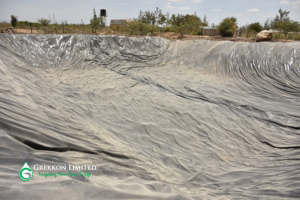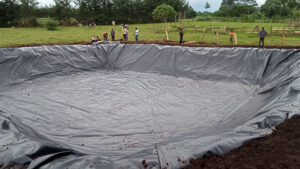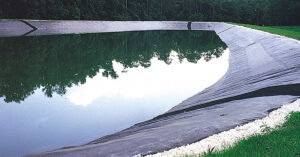Water Harvesting With Dam Liners
Water harvesting with dam liners in Kenya is a an important aspect of effective and consistent all year round irrigation. Grekkon Limited is the largest provider of the 3 main types of dam liners in Kenya. This is for water harvesting and aquaculture to smallholder and medium commercial farmers. We encourage every commercial crop farmer to excavate a water pan for off-season production. We then line this water pan with geomembrane material to hold water. Dam liners prevent water loss in the reservoir through seepage into the soil below. Produce cultivated during the off-season fetches better prices, and ensures a consistent farm income. Our dam liners have anti-UV treatment to protect them from long-term solar degradation, which extends their lifespan

A roll of 0.75mm dam liner
Water Harvesting With Dam Liners
Steps:
- Work out the area under irrigation, or to irrigate
- Determine the irrigation method. Each method consumes different amounts of water. We recommend drip irrigation as the most water efficient method
- Understand how long the dry off-season period is
- The 3 workings above will give an indication of the water quantity needed
- Work out the size of the water pan to excavate to hold this amount of water
- Calculate the dam liner size to install in this water pan
An illustration
An acre of strawberry measures 4,048 meters square. The method of irrigation is drip, and strawberry require 100 cubic litres weekly per acre (averagely). The dry period lasts for 32 weeks, so the amount of water needed is 3.2million litres or 3,200 cubic liters to last this long. This assumes zero rainfall in these 8 months, and that there is a shade net covering to prevent evaporation losses
The reservoir dimensions are 36M length x 36M width x 2.5M depth. The total liner needed for this is 1,849 meters square

A newly excavated reservoir with a dam liner covering
Dam Liner Types In Kenya
1. By material
1.1. High density polyethylene (HDPE) geomembrane. These are the most common types because they have additional use in making urban multi-storey gardens
1.2. PVC dam liners. The are soft but heavy. This makes them easier to weld and install
1.3. Low density polyethylene (LDPE). They are soft and light, hence the least popular because they have a short lifespan

HDPE geomembrane pond lining
2. By size
2.1. 0.5mm / 500 microns. For smooth surfaces or soil with light murram particles. It has a lifespan of 15 years
2.2. 0.75mm / microns. For lightly stony or rocky surfaces. It has a life span of 25 years
2.3. 1mm / 1,000 microns. Applied on moderately stony or rocky surfaces. Period of use is 35 years
2.4. 1.5mm /1,500 microns. For application in difficult terrain where the others will not hold

An irrigation water pan with dam liner material
